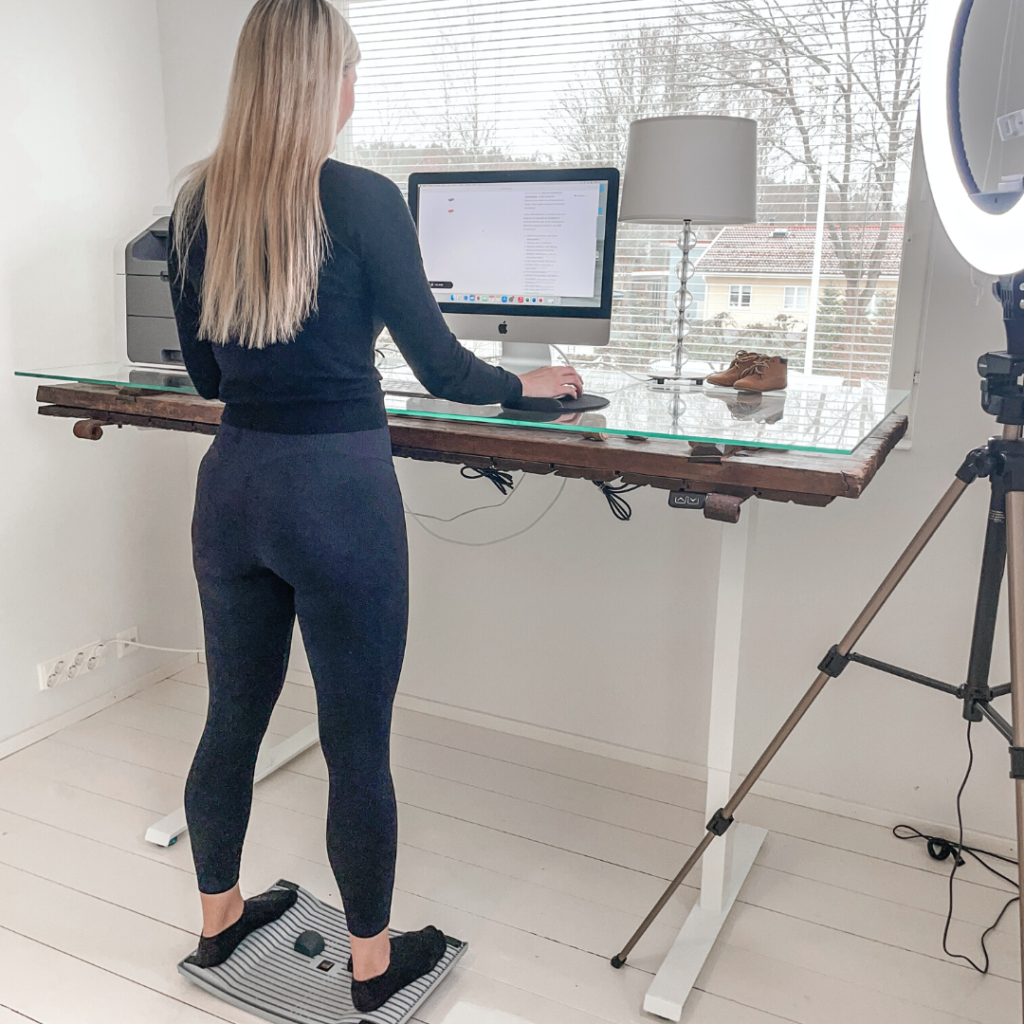The shift to remote work has fundamentally changed how we approach workplace wellness. As kitchen tables transformed into makeshift offices, ergonomics experts have been searching for practical solutions to combat the physical challenges of home-based work. Balance boards have emerged as a surprisingly effective tool in this new landscape, offering remote workers a simple way to introduce movement into otherwise sedentary days. These versatile platforms work by creating controlled instability, encouraging subtle movements that engage multiple muscle groups while you work.
What makes balance boards effective for remote work setups?
Balance boards are uniquely suited to home office environments because they create an active standing experience without requiring significant space. Unlike treadmill desks or other bulky equipment, a quality balance board fits easily under a standing desk for improved ergonomic support and can be stored vertically when not in use, making it ideal for compact home offices.
The physical mechanics behind balance boards are surprisingly sophisticated. They create a controlled unstable surface that triggers constant micro-adjustments in your posture. These subtle movements activate your core, leg, and ankle muscles while improving proprioception (your body’s positional awareness). For remote workers using standing desks, this addition transforms static standing into dynamic movement.
Balance boards work by encouraging something physiologists call “non-exercise activity thermogenesis” or NEAT, which refers to the energy expended during everyday activities outside of formal exercise. When you stand on a balance board, your body naturally makes tiny movements to maintain balance, increasing your NEAT and helping prevent the musculoskeletal stiffness associated with prolonged static positions.
The hidden health risks of remote work sedentary habits
Remote work has inadvertently increased sedentary behaviour for many professionals. Without the natural movement that comes with commuting, walking to meeting rooms, or visiting colleagues, remote workers often spend more uninterrupted hours sitting than their office-based counterparts. This prolonged sitting has been linked to numerous health concerns including increased risk of cardiovascular disease, weight gain, and metabolic dysfunction.
Poor posture compounds these problems. Many home workstations lack proper ergonomic support, leading to forward head posture, rounded shoulders, and compressed spinal discs. Over time, these postural issues can develop into more serious conditions like chronic back pain, neck strain, and reduced mobility.
The lack of movement throughout the workday also affects circulation, particularly in the lower extremities. Reduced blood flow can lead to swelling, varicose veins, and heightened risk of deep vein thrombosis. Additionally, muscle deactivation occurs when certain muscle groups remain unused for extended periods, contributing to weakness and imbalance.
| Remote Work Challenge | Potential Health Impact | How Balance Boards Help |
|---|---|---|
| Prolonged sitting | Increased cardiovascular risk, weight gain | Promotes standing with active movement |
| Poor posture | Back/neck pain, compressed discs | Engages core muscles, improves alignment |
| Reduced circulation | Swelling, varicose veins | Stimulates blood flow through constant movement |
| Muscle deactivation | Weakness, imbalance | Activates multiple muscle groups simultaneously |
5 evidence-based benefits of using balance boards daily
Improved core strength is perhaps the most obvious benefit of regular balance board use. The constant need to stabilise yourself engages your deep abdominal muscles, obliques, and lower back. For remote workers, this translates to better posture during long video calls and reduced risk of back pain from extended computer use.
Better posture naturally follows from increased core engagement. When standing on a balance board, your body must maintain proper alignment to stay balanced, training your muscles to support optimal spinal positioning. This counteracts the “tech neck” and hunched shoulders common among computer users.
Increased calorie burn is another advantage. While not a replacement for dedicated exercise, the additional muscle engagement from using a balance board can increase your metabolic rate during the workday. This modest but consistent increase in energy expenditure adds up over time.
Enhanced focus and cognitive function occur as a result of the mind-body connection required to maintain balance. The slight challenge of staying balanced creates just enough stimulation to keep your brain alert without distracting from work tasks. Many users report improved concentration and reduced mental fatigue.
Reduced lower back pain is consistently reported by balance board users. The gentle movement helps decompress the spine and distribute pressure more evenly throughout your back, relieving the strain that typically accumulates during static standing or sitting.
How to integrate a balance board into your workday
Start gradually if you’re new to balance boards. Begin with 15-20 minute sessions a few times daily, allowing your body to adjust to the new challenge. Most people can work up to 1-2 hours of cumulative use throughout the day. Listen to your body and take breaks whenever you feel fatigue.
Consider your footwear carefully. Many users find that barefoot balancing provides the best sensory feedback and engagement, while others prefer flat, minimalist shoes. Avoid high heels or shoes with thick, cushioned soles that may reduce stability and proprioceptive feedback.
Complement your balance board use with simple movements throughout the day. Try gentle calf raises, side-to-side weight shifts, or small knee bends while balancing to increase the benefit. These movements can be performed during phone calls or while reading documents.
Maintain proper ergonomics by ensuring your standing desk is at the correct height (elbows at approximately 90 degrees when typing) and your monitor is at eye level with an adjustable laptop stand. The balance board should be positioned so you can step on and off safely without disrupting your workstation setup.
What ergonomics experts say about active standing
Physical therapists often recommend balance boards as part of a comprehensive approach to workplace wellness. They note that the continuous small adjustments required when using a balance board help maintain joint mobility and muscle engagement, preventing the stiffness associated with static positions.
Occupational health specialists highlight the preventative benefits, pointing out that active standing solutions like balance boards address problems before they develop into injuries requiring medical intervention. They view balance boards as valuable tools in reducing workplace musculoskeletal disorders, which account for a significant portion of work-related health issues.
Ergonomics researchers emphasise that movement variety is key to workplace health. They recommend alternating between sitting and active standing throughout the day, with balance boards providing an excellent option for the active standing component.
At Gymba, we’ve seen firsthand how balance boards transform remote work experiences. Our Gymba board for active standing workstations has helped countless professionals introduce healthy movement into their workdays without disrupting productivity. If you’re looking to improve your remote work setup, a quality balance board might be the simple addition your home office needs.

